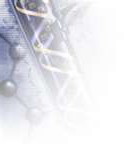
![]() ISSN 2153-8972
ISSN 2153-8972
 |
Recently, we had
the privilege of publishing two papers by Carol
Rowsemitt, PhD, RN, FNP and Thomas Najarian, MD. These
superb papers support views shared by Dr. John Dommisse,
Dr. Kenneth Blanchard, and many other advanced,
outside-the-box thinkers in modern thyroidology.
However, to their credit, Dr. Rowsemitt and Dr. Najarian
persuasively elaborate and document that thinking.
Also Coming Soon
• Editorial
by Dr. John C. Lowe: The British
Thyroid Association and UK Royal College of Physicians continue to keep false statements
of fact online about T3-containing thyroid products
including Armour Thyroid. The scientific facts
patently show the falsehood of the two
organizations' statements. Is this a failure of
responsibility to study scientific issues before making
public pronouncements on them? Or do the statements constitute
science fraud? |
|
|
|
|
|||
|
|
